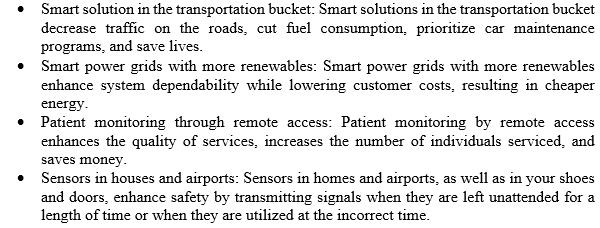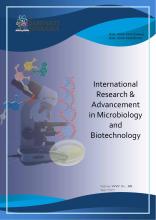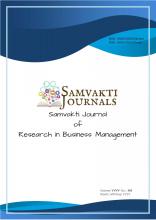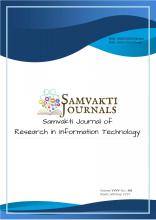+91-9958 726825
Secure Integration of IoT and Cloud Computing
|
Mobility Technique Is a fairly latest invention that relates to an information storage and processing architecture that is separate from the wireless phone. The IoT is a brand-new concept. The Internet of Things (IoT) is a comparatively recent networking technologies that is increasing popularity swiftly. IoT is more particularly linked to wireless telecommunications. The primary aim of wireless network-based interaction and collaboration amongst things and objects is to achieve the goal established for them as a united entity. Additionally, both Digital Storage and the IoT are quickly evolving cellular networking capabilities. This article provides a summary of the Internet of Things (IoT) and Data Storage, with an emphasis on the security concerns that both technologies face. We purposefully mix the 2 acquired notifications to look for commonalities and see what advantages there are in integrating them. Finally, we will discuss Cloud Computing's contribution to IoT technologies. As a result, it demonstrates how Cloud Computing technology enhances IoT functionality. Finally, we look at the security issues that come with combining IoT with Cloud Computing.
|
|
The Internet of Things is a relatively recent networking technologies. The Internet of Things (IoT) is a "system of connected products, appliances, automobiles, skyscrapers, and other items that are connected with technology, algorithms, sensing, and a proxy server, enabling these products to gather and share data," according to Wikipedia. The IoT technology is the next huge thing in the modern technological sector, but it also means major adjustments in how businesses operate. In the next years, an increase in the amount of connected gadgets and places, as well as the jobs they will accomplish, is expected[1].
Furthermore, the IoT concept's primary strength is the significant effect it will have on a variety of elements of prospective consumers' daily lives and behavior. As a private user, the most apparent impacts of the Internet of Things would be seen in both home and professional settings. For starters, designed with different, e-health, assisted life, and better education are some examples of prospective various uses where the novel approach, the Internet of Things, will perform a significant role in this regard. Business customers in the second instance may see similar effects in fields like as transportation, bright human and cargo mobility, automated and industrialization, and marketing[2][3][4]. The IoT is divided into three sections:
As a consequence, virtualized mass storing and large computations are frequently expensive. Just a few examples include memory, communications capabilities, power, and computing restrictions. Mobile Cloud Computation is the latest technique that integrates multiple techniques to boost existing network capability and availability. In addition, some other innovation known as Mobile Cloud Computing (MCC) has enhanced in latest decades of the rise of a new creation of offerings founded on the principle of "cloud computing," that either aims to do is focus on providing direct exposure to statistics from anybody at any time by reducing or trying to eliminate necessity gadgets. Mobile computing, more exactly, is defined as the use of clouds technology in conjunction with portable apps to increase the intellectual capability, capacity, storing, fuel, and context understanding of portable electronics. A fresh strategy to digital marketing products for corporations and organisations may also be termed as mobile environment[5][6][7]. Virtualisation is the product of multidisciplinary methodologies that incorporate touchscreens with cloud technology. Connection and ad-hoc portable clouds are both referred to as "mobile cloud." While offering capabilities to phone users, the developed system of a connectivity mobile environment remains static. Because of how Cloud Computing works, it might be used as a basis for Internet of Things and Monitoring Footage techniques, thereby boosting existing capabilities.
The rest of the article is organized as following. A summary of important work on “internet of things” Cognitive technology, as well as potential interaction. The Internet of Things' architecture, and also several of the most basic functions. The benefits and benefits of combining IoT technologies with Cloud Computing technology. Many studies have been conducted on the interaction of the IoT devices with Cloud Services. Using cloud technology skills, a new system for offering and sustaining broadband access and real-time software activities for intelligent building needs. In moreover, it demonstrates a foundation for managing, analyzing, and controlling information obtained from large scalable, diverse, permission less, genuine and digital equipment that can be handled, examined, and typically conducted by dispersed cloud-based offerings. Examine the high tech for merging Cloud Computing with the IoT systems, as well as a Technology home automation scenarios to assess IoT acceptance criteria. Finally, the County Everything architectural was introduced, which is a Virtualized IoT device infrastructure that incorporates Clouds Everything IaaS, PaaS, and SaaS for accelerating Future IoT generation and management. Also included is a demonstration and analysis of a few of the IoT and Cloud Technology connectivity concerns that must be solved in order for a city infrastructure to handle obstacles like high energy costs, high CO2 output, increased commute times, and enhanced driver protection. The strategy focuses on four areas: It also demonstrates the approach's feasibility and profitability by demonstrating the deployment of 3 usage, including analyzing building characteristics, controlling kitchen machines, and managing home entrance. For worldwide Internet of Things implementation, the company provides a cloud-centric strategy. First most significant development models and possible applications that will probably fuel IoT study in the near term are discussed, as well as a Hybrid approach based on the interaction of cloud resources utilizing Aneka. Ultimately, it emphasizes the need of putting WSN, the online world, and cloud technology combined for the advantage of the scientific academic researchers to conclude the IoT concept. As well as the volume of data that IoT devices might create and the need for digital machine usage and disk space. Integration with virtualization has become extra and more essential, also to render it conceivable to form more usability from data collected produced by IoT’s and grow smart solutions for the customer, but also to start making it conceivable to start creating more effectiveness from data produced by IoT’s and create software solutions for the user, a correlation known as Cloud of Things. With IoT’s, everything can become a corner of the Network and provide data. In addition, in order to develop more valuable solutions, the data generated should be processed in accordance with its specifications. Integration of IoT’s with cloud computing is becoming more essential for the preceding aim. The Cloud of Things (CoTs) is the name given to this new paradigm, which is described in. Such publications, is from the alternative side, do not examine the new CloudIoT paradigms in depth, that involves whole new programs, challenges, and academic issues. The study concentrates on certain key issues in CoT and suggests a remedy concept of sophisticated major hub networking. Sensing and small IoT’s can't do the advanced operations and which was before that intelligent gates can. Lastly, this section covers interaction technologies such as public internet, computing topologies, and Point processing. Numerous integrating concepts and data science methodologies, as well as numerous obstacles and unsolved scientific literature, are also covered.
The safety of connected computers and systems in the Web of Things is the subject of Information phones. The Concept that relates to the expanding amount of goods and organizations – referred to as objects in this context – that are endowed with special Characters and the ability to send information over a system independently. Processor architectures, intelligent sensing networks used in commercial machine-to-machine (M2M) networking, smart electricity networks, house and buildings management, vehicle-to-vehicle interaction, and wearable’s technology gadgets all contribute to Networking network expansion.
The main problem is that, considering networked gadgets and other goods are still a novel idea, cybersecurity has not consistently been considered in product development. Heterogeneous distributed platforms and applications are frequently included with IoT gadgets that are old of current and unsecure. Additionally, consumers sometimes forget to update the login credentials protection on connected devices, or even when they do, they do not select usernames that are sufficiently strong. To improve protection, an Electronic system that must be physically available on the Web should have been separated out of its own overall networking accessibility should indeed be restricted. The development stems from social should also be monitored for any unusual traffic, and if one is detected, appropriate action needs to be made.
That the utilization of Web to provide machines, data, companies, and programs is known as cloud computing. To make cellphones increasingly power economical and intellectually capable, considerable technological and programming advances are required. Researchers and manufactures must work together to achieve this.
The combination of internet services with portable apps in particular to optimize the processor, capacity, space, battery, and sensing capabilities of the smart phones is referred to as mobility cloud technology. Interdisciplinary methodologies that integrate portable computer with cloud services have resulted in portable clouds computer technologies. As a consequence, another term for this multidisciplinary field is portable software as a service. The term "mobile cloud" may be interpreted in two ways: connectivity portable clouds and ad-hoc mobile cloud. While offering capabilities to phone devices, the embedded system of a connection cloud server remains fixed. Despite this, many programs employ public cloud for storing and implementation functionality, such as Apple's Siri (voice-activated personal assistant) and iCloud centralized repository.
In addition, a young crop of applications oriented by the concept of "cloud computing" has evolved in latter decades, with the objective of providing accessibility from any place at any time, while lowering or eradicating the need for hardware resources. "Cloud computation" refers with the use of computational administrative capabilities, as well as programming, via the utilization of companies offered over the Web. Cloud applications are quickly and 1 of the more aggressive industries in the globe for IT and development companies. Public cloud is a kind of technologies that may be utilized to build IoT solutions.
Portable Public Clouds, in specifically, is defined as the combination of cloud - based services with portable apps to increase the computational capacity, storage, store, electricity, and spatial intelligence of handheld phones. Mobile Cloud Computing is the product of scientific methodologies that combine mobile applications with virtualization. Users may also acquire machines, memory, companies, and tools through the Interties via cloud storage. |
|
The author has explored the safe incorporation of IoT and Cloud Computing. Cloud computing technologies has numerous benefits, but it also has significant disadvantages. Cloud services is kind of an equipment that allows data to be stored and processed in anything other than a mobile app. We provide an introduction of IoT innovation in this post, but also an explanations of how it operates and what to use it. We also go through the major features of Cloud Computing as well as the trade-offs which comes with it. Cloud technology is some kind of architecture that stores and processes information except in a smart phone. Furthermore, the Internet is a mature technologies that is rapidly acquiring popularity in the telecoms business, notably in the field of cellular telephony today.
The basic purpose of wireless internet contacts and cooperation amongst entities and devices is to help them reach a common goal. In addition, Cloud Services and the Cellular sensor Networks are also rapidly evolving capabilities that rely on Bluetooth connectivity. |
|
After concluding on the safe connection of IoT and Cloud Computing, the author emphasized the importance of Cloud Applications in IoT innovation, as well as how Cloud Innovation promotes IoT capability. Furthermore, the proposed approach framework was utilized to examine the privacy challenges of IoT and Cloud Computing integrating, and thus a description of how and why the two encrypting techniques used contributed to IoT and Cloud Computing assimilation. This region may be the subject of ongoing research into the merging of those different systems. Due to the rapidly growing of the both platforms, the safety issue must be resolved or substantially decreased in order to create a good analysis framework. This study's cybersecurity problems might be utilized as a case study. The purpose studies with the goal of minimizing those.
|
|
|
 IoT Data Advantages |
 The strategy focus on four areas |
Dr.Kashif Qureshi (2021), Secure Integration of IoT and Cloud Computing. Samvakti Journal of Research in Information Technology, 2(1) 1 - 7. 10.46402/2021.02.10




